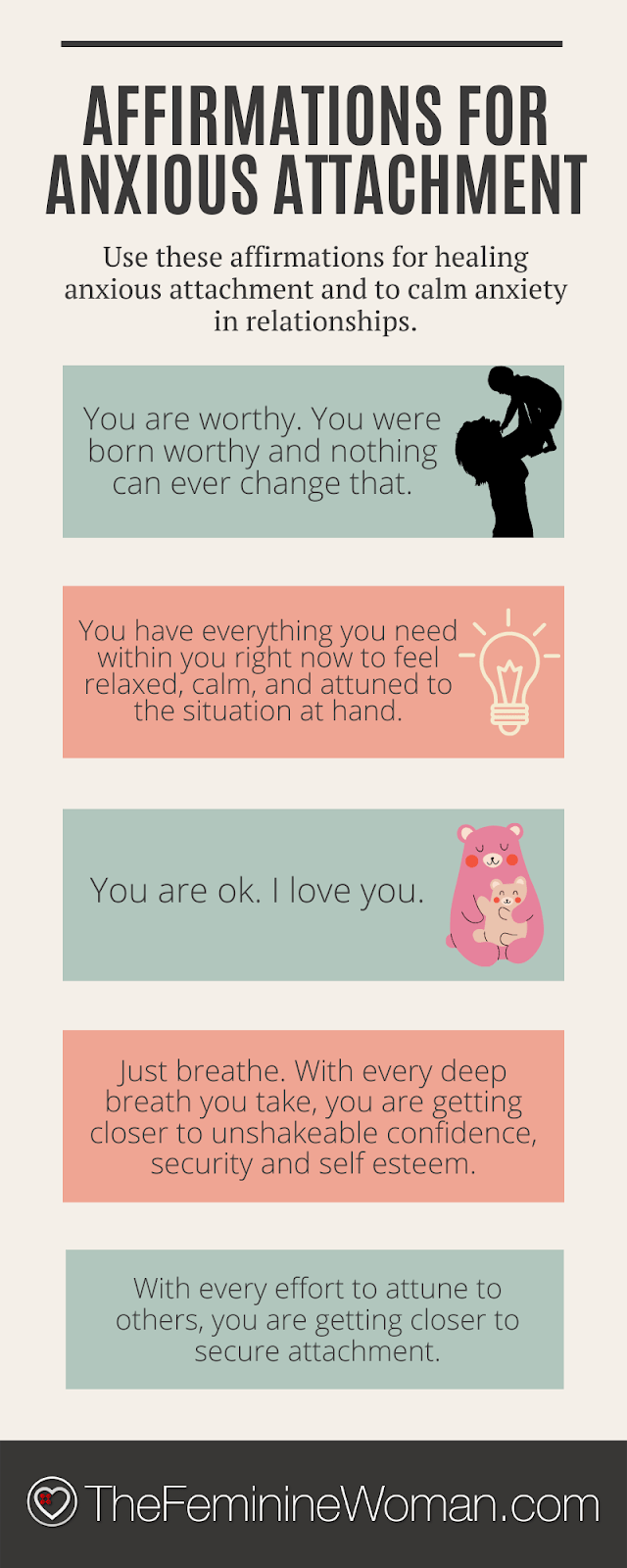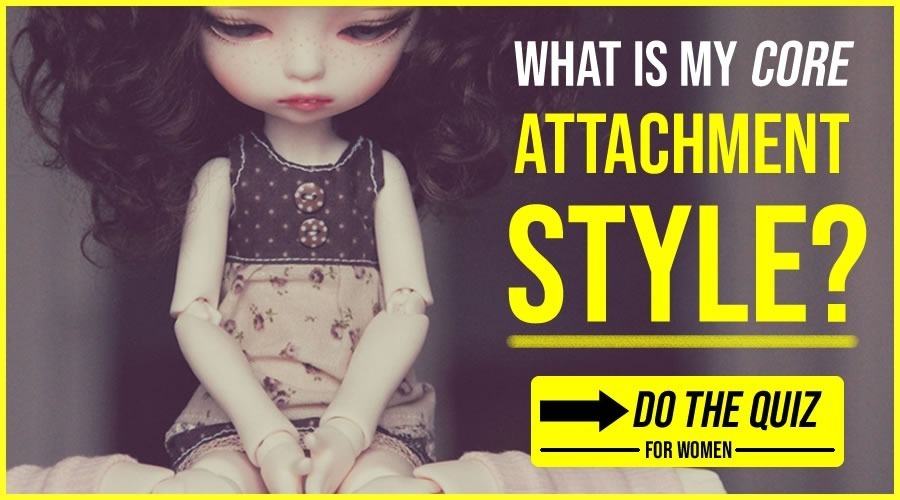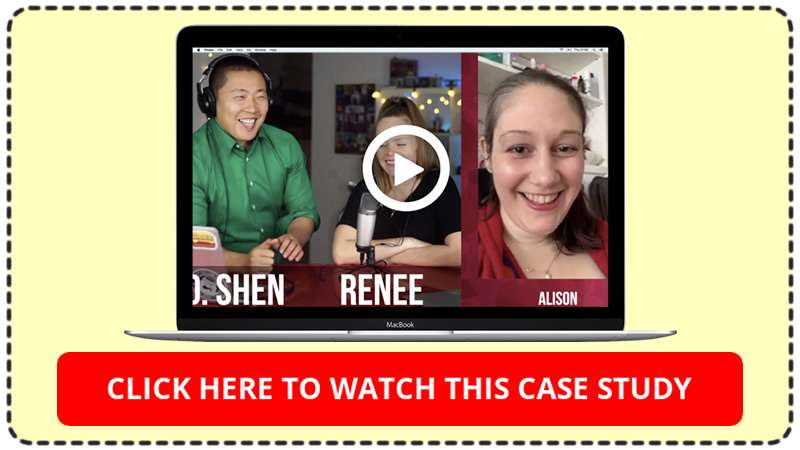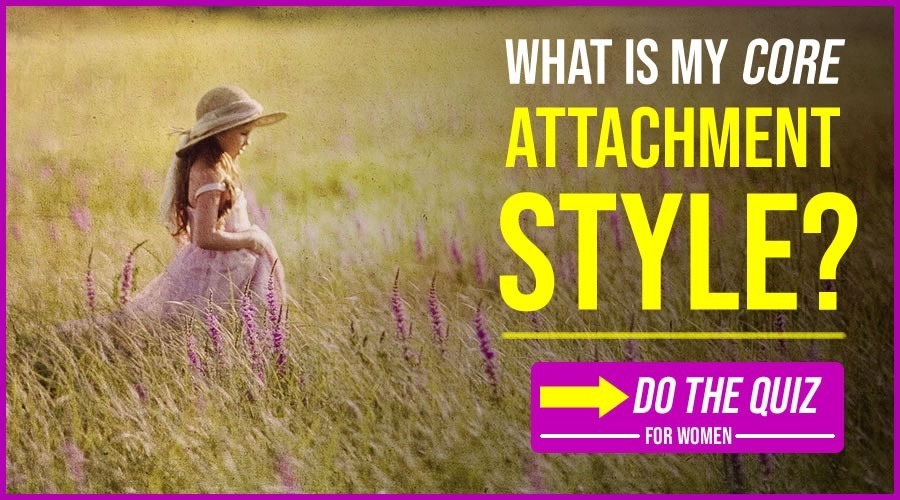NCRW
11 Anxious Attachment Triggers: Causes + How to Manage Them
Author: Tooba Farooq & Renée Shen
When you have anxious attachment, there are a lot of things that could trigger you to feel anxious, panicky and fearful.
These are what we call anxious attachment triggers.
But why are some people prone to these triggers and others aren’t?
It comes down to your unique attachment style.
Our attachment style dictates how easily and with how much intensity we begin to feel stress in our relationships, and often in everyday life.
(Why is this important? It is because your core attachment style largely dictates and influences what happens in your relationship. Thus it’s imperative you understand your core attachment style!)
Table of Contents
Why Some People Find Relating To People Stressful & Others Don’t?
The way we relate to one another has always been of key interest for social scientists.
Why do some people seem to have a string of broken relationships, while others have relatively stable and loving relationships over time?
Why are some people highly strung in their relationships while others are relaxed?
Why do we connect better with some people?
Why are some people prone to intense and frequent jealousy while others not so much?
The expanding interest in human psychology has brought with it a lot of answers for these questions; one of them being the attachment theory.
Simply put, the attachment theory explores how our relationship with our primary caregivers impacts our adult relationships, most importantly, our romantic relationships.
According to this theory, we can develop one of four types of attachment styles based on how we were treated as babies.
Just briefly, the 4 types of attachment styles are:
Secure Attachment Style
If a baby’s need for love, care and attention is fulfilled promptly and regularly by the parents and close relatives, the baby will develop a secure attachment style. This means that as he grows up, he will have the capacity to be:
- Empathetic
- Loving; and
- Will be able to maintain healthy, long term relationships
Avoidant Attachment Style
Growing up with a parent or parents who were emotionally unavailable or cold may lead an adult to have an avoidant attachment style.
If a baby and child is let down constantly, they will learn to “turn off” their attachment needs and be self-sufficient when it comes to fulfilling their emotional needs.
That’s why even as an adult, chances are that people with this attachment style are emotionally closed off.
They value their independence and prefer being alone rather than in a relationship, especially if their partner is starting to get serious.
For more on this attachment style, see: Dismissive Avoidant Attachment: What Is It & 7 Obvious Signs.
Anxious Attachment Style
Inconsistent responses to a child’s needs can be very stressful and confusing for them.
For instance, not knowing whether she’ll be held and comforted or ignored when she cries can make the child stressed and anxious.
This causes anxiously attached people to “hyper-activate” their attachment system. Meaning, they are needy and are always looking for proximity and reassurance.
A key issue with this type of attachment is a fear of abandonment.
A child will exhibit this through behaviours such as being clingy and continuously crying when left alone.
If we translate this behavior into adult relationships, people with anxious attachment style continue to be:
- Clingy to their partners
- Have a high need for their partner’s approval; and
- Constantly need reassurance that their partner won’t leave
Disorganized Attachment Style
Children who go on to develop a disorganized attachment style display behaviours of both avoidant and anxious attachment style and a lot more.
They tend to have aggressive tendencies and to externalize their anger through acts of violence.
MORE: 20 Deadly Signs A Man Has Anger Issues & How To Resolve Them.
As adults, they are unable to maintain healthy, long term relationships because they are usually highly unpredictable and verbally or physically abusive towards their partners.
For now, let’s zoom in and focus on the anxious attachment style. We’ve established that it is the product of inconsistent parenting.
Even though some anxiously attached people are able to function normally as adults, even enjoying romantic relationships, there are things that can trigger them and bring out their anxiety.
Let’s take a look at 11 anxious attachment triggers and their potential downfalls.
#1: A Partner Being Dismissive
Since people who are anxiously attached have a hyper-activated attachment system, they really need reassurance and constant love in order to feel safe and worthy.
So if they find themselves with a partner who is emotionally unavailable or dismissive, it triggers their anxiety.
Remember, they need that feeling of closeness and approval in order to feel safe.
People with an anxious attachment style also tend to go out of their way to keep their partners, employers and/or friends happy.
They like to do this because to them, it feels like it guarantees that these people will remain happy with them.
So, what happens when these people don’t approve of them?
Simply put, they are completely ruled by their insecurities and fears.
Think of a co-worker who works extra hours and puts in all their effort to finalize a project.
They submit the work in high spirits only to face criticisms of how it’s not satisfactory.
While this would upset anyone, an anxious person would feel even worse as the disapproval from an authority figure would remind them of the disapproval they felt in the past.
For them it’s not the project that has been dismissed. It’s them, it’s their whole being.
This level of insecurity sometimes leads them to engage in low value behaviors that push people away.
#2: A Partner Being Hot And Cold
Anxious attachment occurs as a result of inconsistent and unattuned parenting that gives mixed signals.
Because of this, anxious individuals tend to put in extra effort to please the people around them.
So when someone starts to act hot and cold towards them, it can really trigger their anxiety.
Someone acting distant is at odds with their desire for a hyper-attuned partner who gives them constant reassurance and love.
Some of the following behaviours can be interpreted as being distant by an anxious person:
- Not calling them back
- Replying to texts later than usual
- Not checking in with them (especially on an emotional level)
- Being on your phone when you’re with them
#3: Another Person’s Anger
Most of us don’t like having to deal with out of control or angry people. But securely attached people have an easier time dealing with their partner’s (or other people’s) healthy anger than anxiously attached people.
For someone with anxious attachment, even moderate, healthy and justified anger from someone can trigger their already fragile and stressed out nervous system, causing them to:
- Run away
- Go into fight or flight
- Feel blamed
- Panic; or
- Worry if they did something wrong (even if they haven’t)
Recommended: 20 Deadly Signs A Man Has Anger Issues + How To Resolve Them.
#4: Rejection
Rejection is the mother of all anxious attachment triggers. The reason for that is quite obvious – because rejection was one of the reasons they developed this attachment style.
That’s why the repetition of rejection results in the same (excessive feelings) of disappointment every time.
The worthlessness that they felt as a baby will kick in and destroy any confidence that they were holding on to initially.
The key here is that those with an anxious attachment style are hyper sensitive to any possible signs of rejection.
Their nervous system responds to small signs of rejection (even if they are not personal), as if he or she had just been severely wronged.
This could also be because people with an anxious attachment style tend to attach earlier than those with a secure attachment style, thus making them feel rejected by another person before the other person was even ready to reciprocate any attachment feelings.
CLICK Here to learn how to use your innate feminine bias for early attachment to create deeper attraction with men. (And inspire a deeper commitment from him, without you looking needy and low value).
#5: New Acquaintances
For some of us, meeting new people can be refreshing and fun, but for anxiously attached people it can be a major trigger.
Related: New Relationship Anxiety: 9 Crippling Symptoms, Causes & How To Overcome It.
Meeting someone new means that they don’t know:
- How this person will react to them
- Whether this new person approves of them
- Whether this new person will soon betray them; or
- Whether this person will judge them
This all makes the anxiously attached person feel vulnerable.
The anxious person tends to feel that with this new person, they haven’t figured out the approved behaviours and that’s why it becomes hard for them to feel calm.
Sometimes they get so anxious that they might not be able to talk or can even begin panicking.
If there is an added pressure of having to impress this stranger, things can get even worse.
Imagine having to cook for the first time and Gordon Ramsay comes to do a tasting!
It might take a high stake situation for some of us to get stressed but for anxiously attached individuals, meeting almost can be a high stake situation.
#6: Reflections of the Past
It is said that trauma never leaves us. We just learn to grow around it so the impact of it is reduced.
Time and again though, it rears its ugly head to remind us that it is still there, especially if the trauma is unresolved and hasn’t been grieved.
These reminders and triggers bring us back to old memories and/or associations.
When we are triggered, our old emotional reactions and patterns come to the surface. This is because these triggers put us back into the same state we were in when the trauma was first caused.
For anxiously attached individuals who have been abandoned before, small reminders of past betrayals can trigger them to become highly anxious.
For example, when people leave, ignore them, or play mind games, it turns their already highly strung nervous system into overdrive.
Their reactions are then regressive, meaning they may act impulsively and from a place of extreme fear or nervousness.
MORE: 15 Shocking Signs Of Abandonment Issues In Adults.
#7: Being in the Limelight
It is very common for people with anxiety to feel overwhelmed when put in the spotlight.
Why would an anxiously attached person be triggered when they are in the limelight?
Because more people notice you and know you. And when more people notice you and know you, more people have opinions about you and there are more people to please, raising the anxiety inside of an insecurely attached person.
Not only that, there may be more relationships to manage - many of which may not be healthy relationships.
There’s nothing like a toxic relationship to trigger someone with an anxious attachment style.
Anxious attachment triggers revolve around:
- Approval (or lack of it)
- Inability to cope with heightened stress
- Fear of being (or feeling) exposed; and
- Fear of rejection
In high pressure moments, when all eyes are on the individual with anxious attachment, the anxiety multiplies at breakneck speed and the adrenaline rush leads to behaviours such as:
- Stammering
- Sweating
- Shaky hands; and
- Possibly even fainting spells
#8: Threatening Emotional Stimuli
Studies show that an anxiously attached person is more likely to have their attention diverted by things like emotional stimuli. Specifically, things that feel like possible threats to their emotional security or their relationships.
Remember, anxiously attached individuals have a hyper stimulated attachment system.
In other words, their anxiety exists to try to get people to attach more to them and give more of their emotional commitment and resources to them.
Anxiously attached people can be needy, and one thing that makes them needy is the ease with which they (consciously or unconsciously) focus their attention on emotive stimuli and perceived threats to their relationship security.
What would be one example of this? If you have anxious attachment triggers, you might feel belittled and confused when all of a sudden, your best friend gets into fits of laughter with someone else.
You already have low self-esteem and are prone to feeling sorry for yourself, and this anxious attachment trigger just makes the situation worse.
It can be a challenge for anxiously attached individuals to create new relationships and allow people into their world.
Even if they are reassured of the importance they have in their lover’s life through reassurance and love, for example, nothing ever seems to stop them from feeling intimidated when their lover’s focus shifts from them on to someone who they feel threatened by.
And for an anxious person - almost anyone can feel like a threat to their supply of attention or relationship security.
Case study: Discover how Alison ended her cycle of abusive relationships by learning to quickly weed out the "wrong types of men", inspiring deep devotion from her chosen man and passing the hardest test of them all - an accidental pregnancy after a month of dating! (...All because of this one simple skill every woman should have.)
#9: Ghosting
Not responding or disappearing without a trace is a huge trend among gen Z.
The world can be a fragmented place that doesn’t value connection, and with the sometimes toxic world of online dating, ghosting is common, if not accepted in this world of lazy communication.
But of course, it is also one of the more concerning anxious attachment triggers.
It doesn’t feel good to be on the receiving end of it for almost anyone. In fact, for anxious people it evokes a familiar negative feeling - the pain of being abandoned.
MORE: He Ghosted Me: 7 Shocking Reasons He Ghosted You.
Ghosting is not only triggering due to obviously being abandoned by someone, for someone with an anxious attachment style, it’s a trigger of old emotions emotions like:
- A lack of worthiness
- Being rejected
- Despair; and
- Dread
You can probably see how this can send an anxiously attached individual over the edge quickly.
The fear of being unworthy and rejected triggers them to resort to emotionally driven behaviours such as:
- Panicking
- Withdrawing, or
- Lashing out angrily
Although their feelings are understandable to some, to others this might all seem like an overreaction to something that’s common practice now.
Thus, these types of responses might be out of proportion, but not unreasonable.
#10: Big Expectations From Other People
One of the biggest anxious attachment triggers is expectations from other people, especially with regards to your performance in:
- A sport
- At work
- In the bedroom; and
- As a parent
I can speak to this personally. As an anxiously attached person, if somebody has high expectations of you whilst being insensitive to how you feel, it will trigger you.
Since anxiously attached individuals need so much love, care, attention and reassurance, if they receive more expectations than any of these things, you can expect them to turn into a hot mess.
Why? Because what they need is more nurturing, not the heavy burden of expectations.
#11: Inconsistent Behaviors
One of the anxious attachment triggers is inconsistent behaviour.
This is because inconsistency feels unstable to them. They’ll feel upset because they will worry that you’ll leave them and they don’t know what to do to win your approval (something that they center their relationships around).
So what are considered to be inconsistent or unreliable behaviors?
- Saying that you’ll call but don’t
- Telling them you trust them but then opening up to someone else Appreciating their honesty but then getting mad when they tell you the truth
- Hot and cold behavior
These are all behaviours that create uncertainty in an already uncertain person.
For an anxious person, these can have a far worse impact on them emotionally than on a securely attached person, and can result in them questioning the whole relationship.
What Can be Done About Anxious Attachment Triggers?
Considering the fact that there are many anxious attachment triggers, we must also talk about the things that can be done to minimize their impact on our lives.
Honestly, constantly being triggered is exhausting and strips years from your life.
Whether it is you who has an anxious attachment style or someone you care about, you can try out the following things to feel more in control and secure in your worth.
Related: 3 Powerful Ways To Self Soothe Anxious Attachment.
Method #1: Meditation
Meditation is key for connecting with yourself and with deeper, more meaningful things beyond just your anxiety.
In order to move beyond anxious attachment triggers, you need to have access to more than just your anxiety. Reducing anxiety in general is key so that you can enter high pressure and triggering situations with a calmer, more present approach.
There are different kinds of meditation that you can try out to see what works for you. The ones that seem to help a lot with anxiety are:
- Mindfulness meditation (learning to be in the moment)
- Focused meditation (using your 5 senses to concentrate on something)
- Movement meditation (helping to release the pent up energy that comes with anxiety)
#2: Processing Your Emotions
If you’re someone who has an anxious attachment style, then there’s no way around the big emotions you feel - other than actually feeling them and processing them.
Without taking this step, your body will constantly be under stress, and that will affect your ability to:
- Work
- Sleep; and
- Relate to others
So do yourself a favor and sit with your emotions, feel, cry and let your body cleanse itself of all the stress. Remember: crying reduces stress.
#3: Affirmations For Anxious Attachment
As anxiously attached individuals, we usually put others on a pedestal and see ourselves as being in the wrong or needing “improvement”.
We often also get into a negative head space because we talk down to ourselves.
By saying comforting things to ourselves we can reduce our internal stress, change the negative mindset and even improve our self-esteem overtime.
The Feminine Woman has some great affirmations for anxious attachment here:

Also, here are some more mantras you can use to be kinder to yourself:
"I am enough"
"I deserve to be treated with kindness"
"I am doing my best"
#4: Thought Stopping & Changing
Psychologists usually suggest this method to stop the train of thoughts that rushes through our minds.
This simple technique can help you take control over your mind and give you the power to think about what you want. The way you go about this is:
- Notice the train of thoughts starting to build momentum and become overpowering
- Say out loud: ‘STOP!’
- Then immediately and intentionally start thinking about something else
Fun tip: You can start singing a song loudly if you can’t think of anything else!
This is also a way to re-train your neurology. When you have a nervous system that tends to go to “depressed” mode, your thoughts and your body follow suit.
So:
By shouting “stop!” you are effectively breaking yourself out of old patterns of stress or negative thought spirals.
#5: Therapy
Therapy isn’t always the first answer, because a lot of the work you need to do for healing anxious attachment revolves around:
- Nurturing yourself when you’re feeling scared and stressed
- Feeling through emotions; and
- Attaching more to a partner or friend who is securely attached (and asking them for support)
Yet if you have no other way of working through past trauma, and if you’re having trouble moving from anxious attachment to secure attachment on your own, then therapy can help.
There is no shame in asking for help, especially when it will help you break negative patterns and improve your mental health.
So what kinds of therapy are helpful for anxious attachment triggers? Mainly CBT (Cognitive Behavioral Therapy).
But other types of therapy that may help are:
- Couples therapy
- Group therapy
- Other types of individual therapy
Final Words On Anxious Attachment Triggers
Anxious attachment triggers are events or memories that cause the stress, anxiety and return of old fears or feelings of worthlessness.
These feelings can then create a downward spiral into a dark place.
However, don’t worry if you see yourself in a lot of these triggers, because there is also hope.
I have worked through my own anxious attachment to become more securely attached - what they call “earned secure”.
It is highly possible, you just have to be serious about healing and taking care of yourself and your relationships.
So go ahead and use the tips we’ve given you, and we wish you all the best in your love life and in your healing journey.


Tooba is a psychologist and freelance content writer. She enjoys traveling, making jigsaw puzzles and spending time with her family.
Tooba Farooq
Author & Editor For National Council for Research on Women. Founder of the popular women's dating & relationship advice website, The Feminine Woman.
Renée Shen
P.S. I hope you've enjoyed this article. Here are some other articles that I think you'd really like too...
Preoccupied Attachment Style: Beware The 8 Signs You Have It
© Copyright National Council for Research on Women. All Rights Reserved




